Despite my fear of heights, I’ve always loved the Alps.
My family and I once lived in a small village perched 1,250 metres above sea level, overlooking the breathtaking Tarentaise Valley in Savoie.
The views of the Vanoise massif and its majestic glaciers were simply unforgettable.
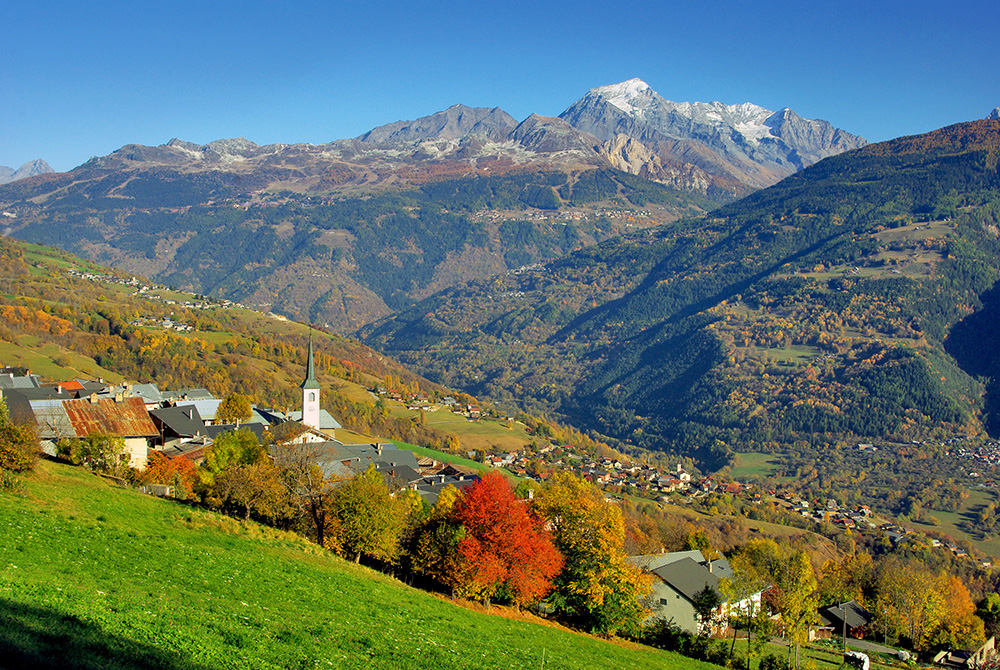
What do I love most about the mountains?
Hiking to panoramic viewpoints that take my breath away.
There’s nothing like standing on a summit, gazing out at the jagged peaks of the Alps.
But there’s one thing that often stands between me and those incredible moments: vertigo.
Take last summer, for example.
My dad and I set out to reach the Col du Coin in the Beaufortain massif, sitting at 2,400 metres.
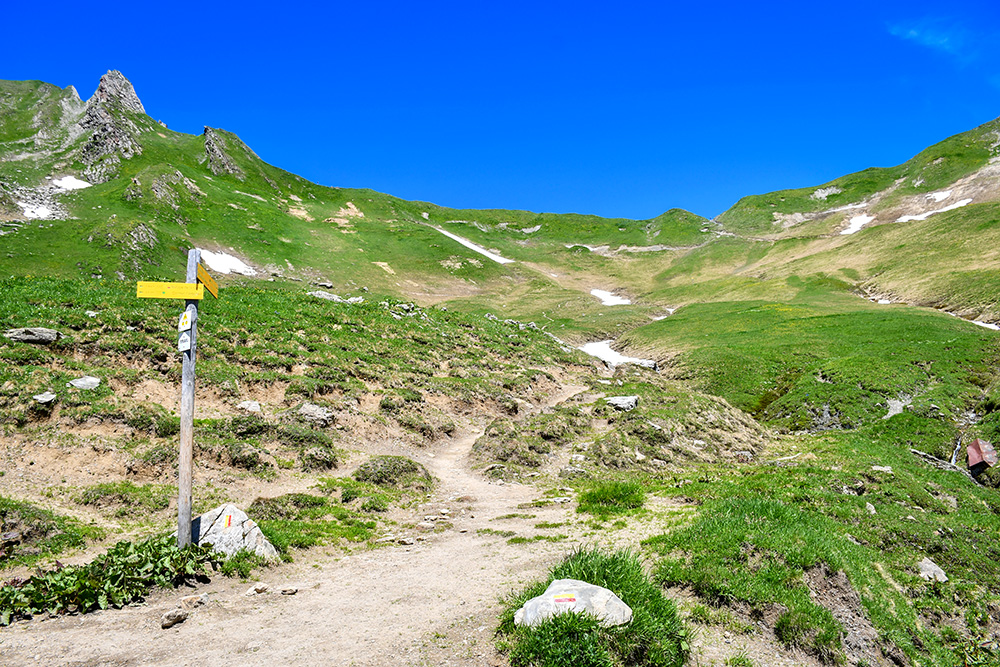
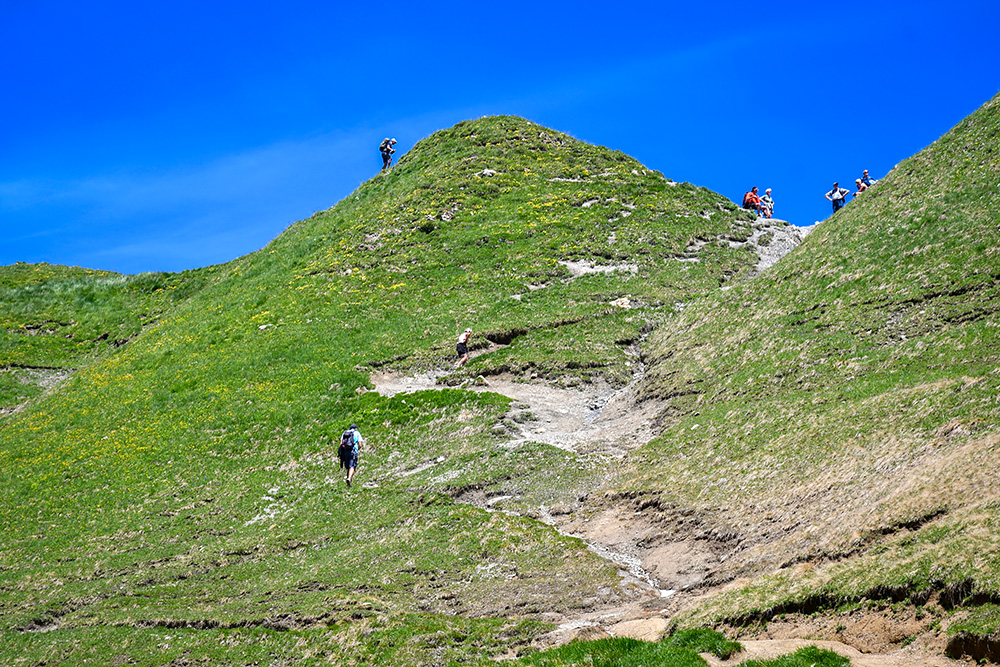
Along the way, we met a friendly hiker who told us about a hidden gem just beyond the mountain pass: a narrow path along the ridge that leads to a spectacular view of Mont Blanc.
Naturally, I couldn’t resist the idea!
Yet, when we arrived at the pass — a narrow, exposed space with steep slopes on either side — I started to feel uneasy.
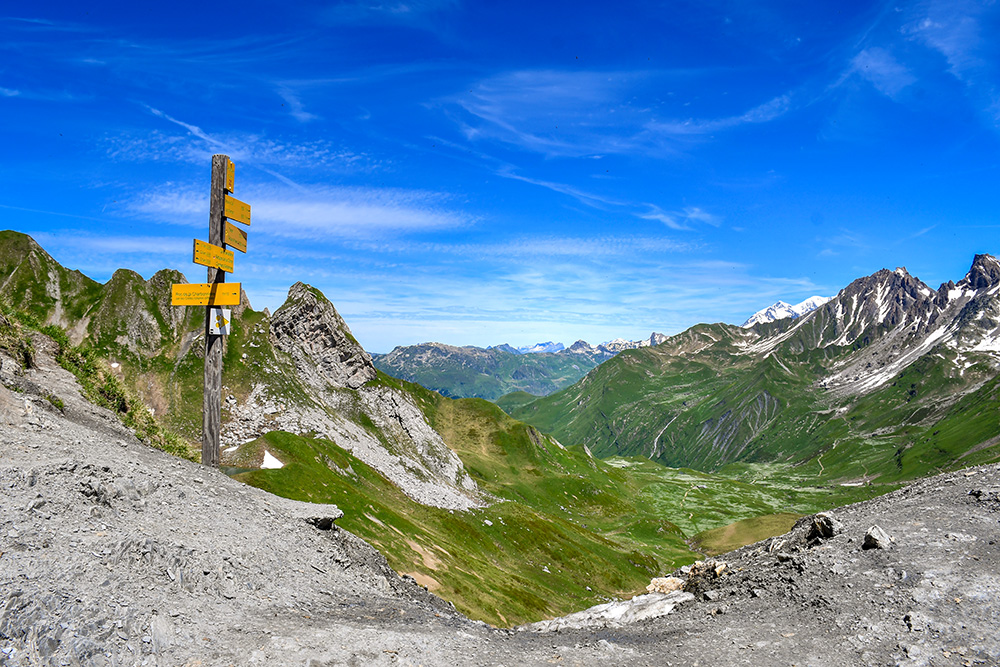
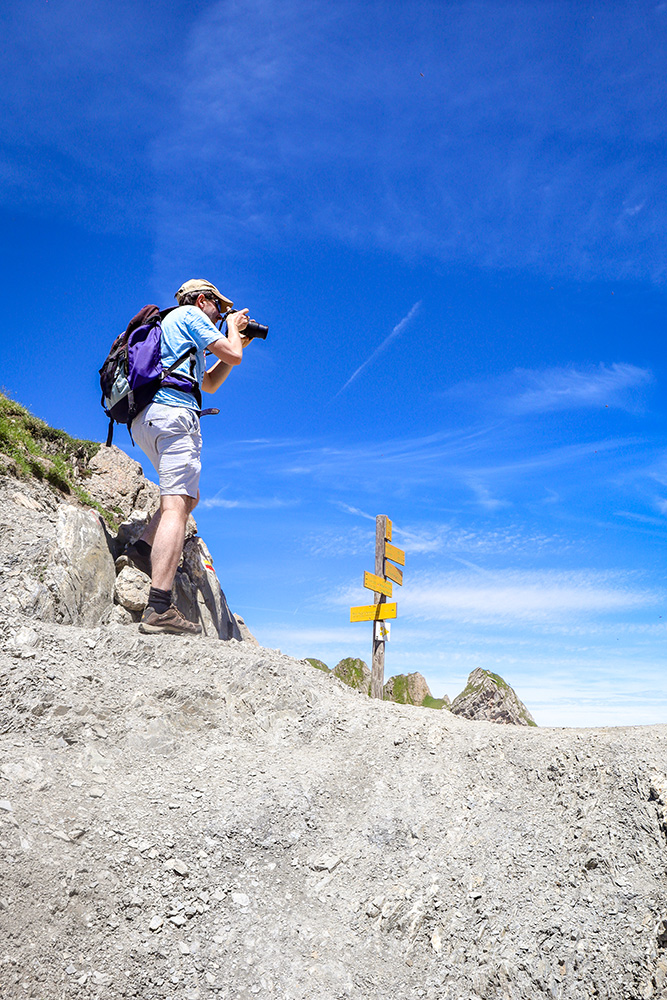
That familiar sense of vertigo crept in.
Determined, I stepped onto the ridge path, as seen in this photo:
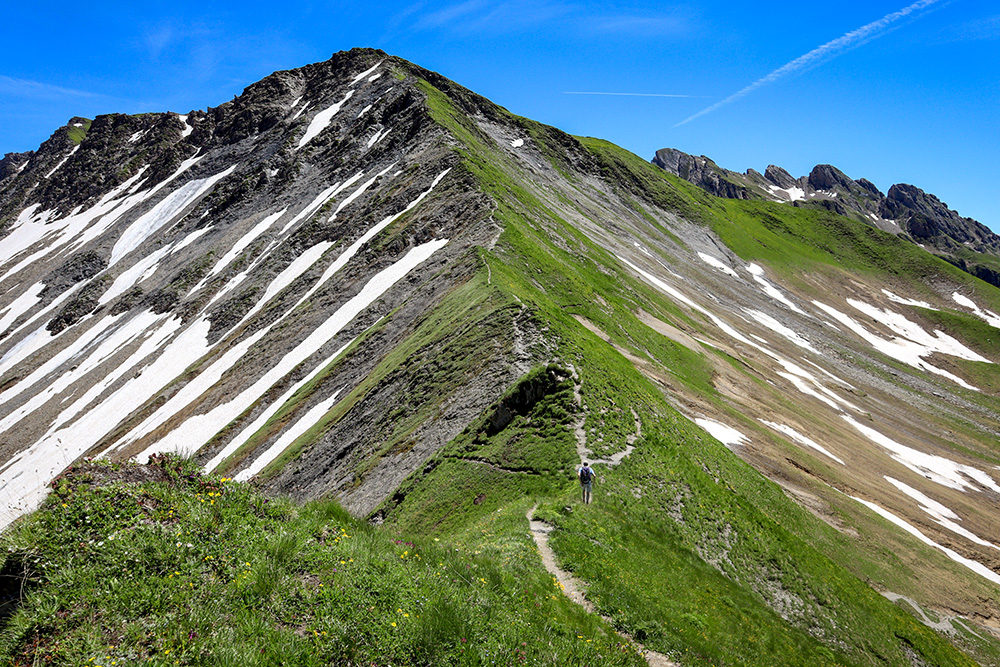
But after just three minutes, the symptoms hit hard. My legs trembled, my head spun, and a wave of nausea washed over me.
I knew I’d reached my limit.
With a shaky hand, I snapped a quick photo before returning to the pass.
I would only catch a glimpse of part of the Mont Blanc massif, but so be it.

Heart pounding, I sat down on a rock, trying to steady my nerves, disappointed but accepting.
Sound familiar? That, my friend, is vertigo in action.
For some of us, the fear of heights turns a joyous hike into a nerve-wracking ordeal.
But here’s the good news: it doesn’t have to stay this way.
As I’ve since learned, vertigo and the fear of heights can be managed, even overcome.
In this article, we’ll explore practical tips to help you face those dizzying mountain trails with confidence.
[Disclaimer: These tips are here to help, but they’re no replacement for professional advice. If your fear of heights is making hiking too difficult or stressful, don’t hesitate to reach out to a specialist — they can make a big difference!]
1. Understanding Vertigo and Fear of Heights
Let’s start with a quick myth-buster: vertigo and fear of heights aren’t quite the same thing.
Vertigo is a physical sensation caused by conflicting signals between your eyes and inner ear. It’s like your body’s GPS going haywire.
Fear of heights, or acrophobia, is a different beast. It’s an irrational fear that can freeze you in your tracks, even when there’s no real danger.
Think of standing on a bridge with solid railings but feeling as though the ground might vanish beneath you. Scary, isn’t it?
Now, here’s the twist: fear of heights can be overcome. It’s not a life sentence.
The key? Understanding what triggers it and taking small, steady steps to regain control.
Ready to dive into how? Let’s go!
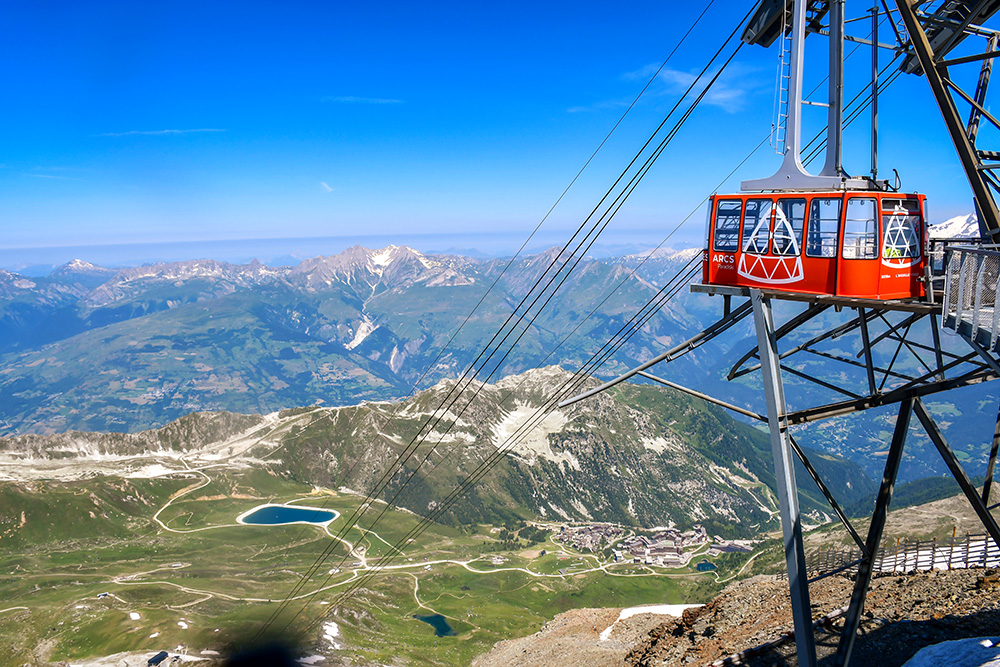
2. Prepare Yourself Mentally and Physically
The mountains demand respect, not recklessness. Feeling prepared can make all the difference when facing your fears.
A. Build Confidence in Your Equipment
Ever heard the saying, “A good workman never blames his tools”?
Well, in hiking, your tools can be your lifeline.
Invest in sturdy boots that grip the terrain like a mountain goat, a reliable pair of trekking poles, and a backpack that hugs you snugly without throwing you off balance.
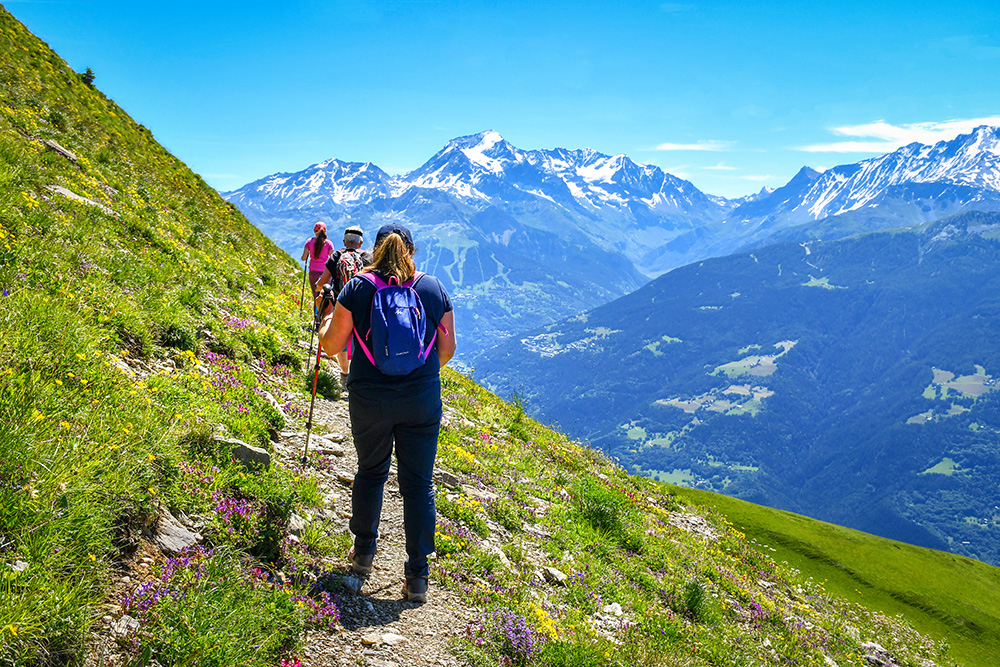
Looking back to my walk to the Col du Coin, I realise I made a mistake.
On that hike to that mountain pass, I didn’t have trekking poles with me — an oversight that could have made a big difference.
Poles would have given me extra stability on the narrow ridge and helped me feel more secure.
Trust me, knowing your gear won’t let you down gives you an extra dose of courage.
B. Develop Your Balance and Proprioception
Balance isn’t just for gymnasts.
The better your body can sense its position, the steadier you’ll feel on uneven trails.
Try this: stand barefoot on one leg for a minute each day.
Too easy? Add a twist by closing your eyes or standing on a cushion.
These simple exercises strengthen your “mountain feet” and build trust in your body’s ability to navigate tricky paths.
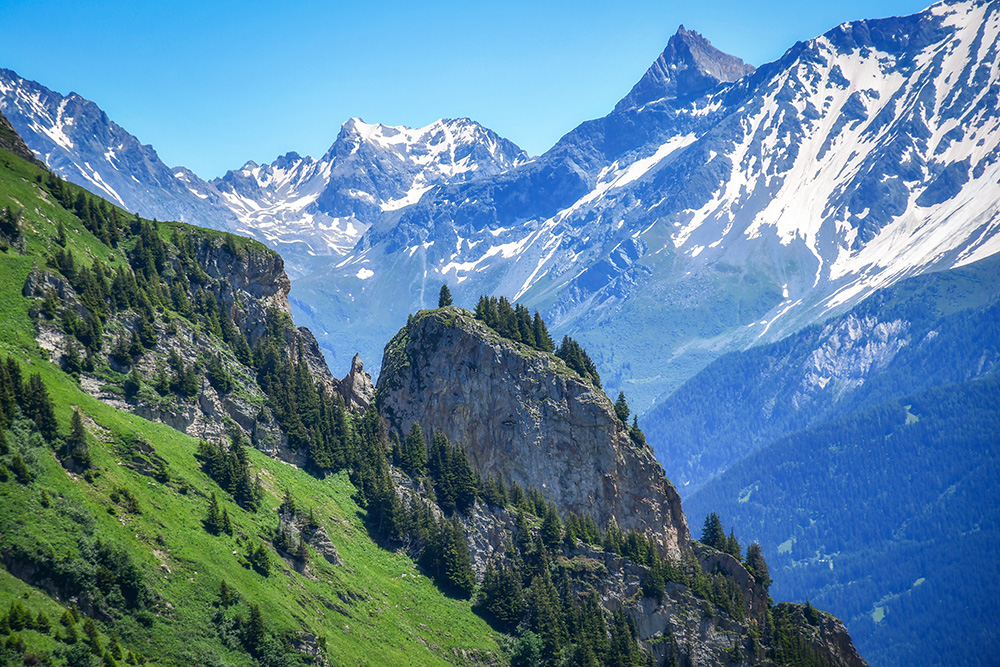
3. Techniques to Manage Anxiety During a Hike
Even the most seasoned hikers feel anxious at times. But you can outsmart that fear before it takes over.
A. Master Your Breathing
When anxiety hits, it’s like your lungs forget how to work.
Short, shallow breaths only make things worse.
Instead, slow down. Breathe in deeply through your nose, filling your belly like a balloon.
Hold for a second, then exhale slowly through your mouth. It’s like hitting a reset button for your nerves.
B. Redirect Your Vision
Here’s a golden rule: don’t look down. Seriously, just don’t.
Your brain sees the drop and spirals into panic mode.
Instead, fix your gaze on a point ahead, whether it’s the end of the trail or a rock that feels reassuringly solid.
Still struggling? Narrow your view by using a scarf or even cupping your hands around your eyes.
Creating a “tunnel vision” effect can calm the chaos.
I’ve learned this the hard way.
Too often during my hikes in the Alps, I ignored this advice and made the mistake of looking down.
My intention was well-meaning — I simply wanted to admire the height I’d climbed and appreciate the effort I’d put in!
But this habit only left me vulnerable to vertigo, as the sight of the steep drops made my head spin more than once.
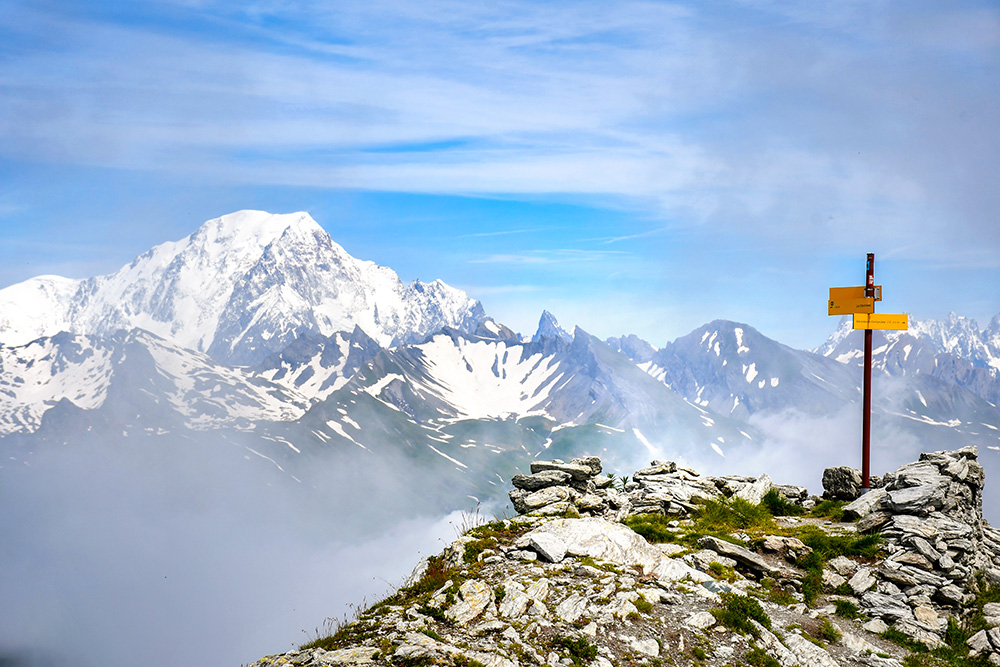
4. Progress Gradually
Imagine trying to conquer your fear of heights by bungee jumping.
Sounds extreme, right?
Overcoming vertigo is not about taking a giant leap — it’s about baby steps.
Start small.
Hike to a low, accessible summit with gentle slopes, where the exposure is minimal but the view still feels rewarding.
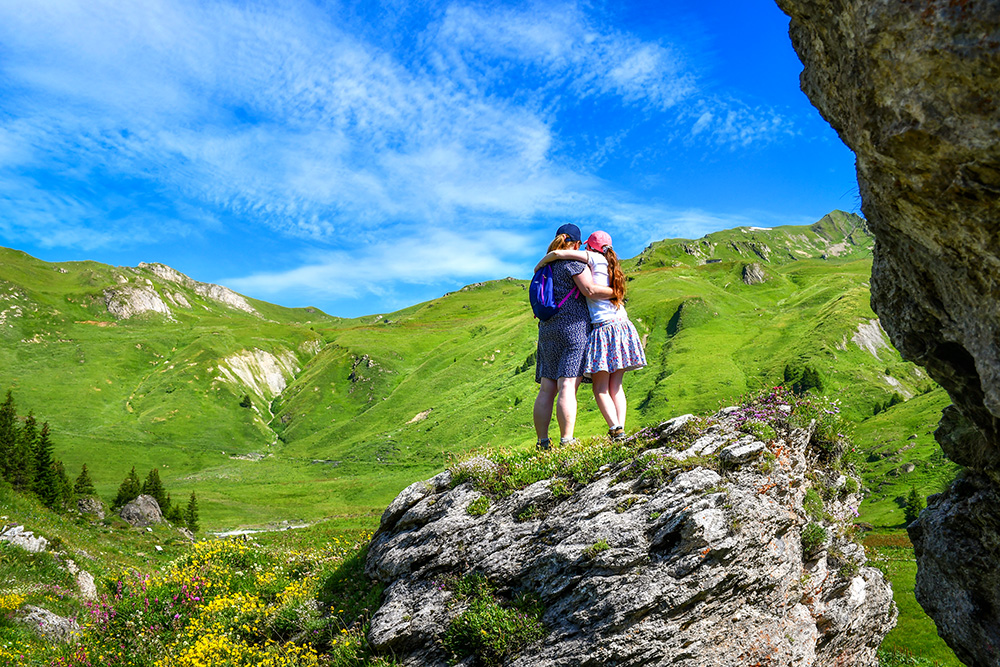
Or try standing on a secure bridge with railings, taking a moment to focus on your breathing and the stability beneath your feet.
Repeat until it feels natural.
This approach reminds me of something my parents taught me when I was younger.
Around the age of 10, I often felt nervous on certain hiking trails in the Alps.
My parents had a simple yet wise piece of advice: “Let’s start small with easy hikes so your eyes can get used to the landscape.”
And they were right — getting familiar with the surroundings made all the difference.
It’s especially important if you’re coming from the city or a flat region where dramatic heights aren’t part of everyday life.
Next, tackle a gentle hillside trail with a friend who understands your struggle.
Bit by bit, you’ll get braver.
One day, you’ll look back and laugh at how far you’ve come. That’s the power of progress.
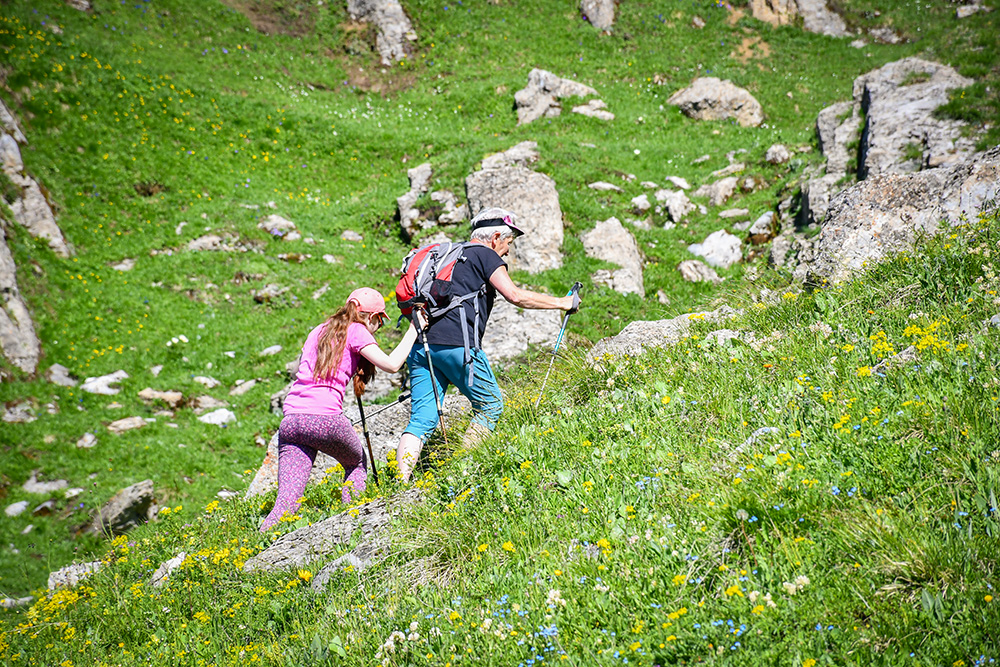
5. Managing Critical Situations
Picture this: you’re halfway across a narrow trail, and suddenly, vertigo strikes.
What now? Staying calm is your lifeline here.
Pause and Breathe
Stop where you are. Don’t push forward in panic.
Instead, take a moment to focus on your breathing.
Slow, steady breaths can work wonders for regaining control.
Ground Yourself
Literally. Sit down or crouch low to feel more stable.
Use your hands if needed, and remember — there’s no shame in going slow or steadying yourself with the terrain.
Focus on a Fixed Point
Lock your eyes on something stable and comforting: the trail ahead, a rock, or even your hiking buddy.
Keep your gaze steady, and you’ll feel the panic start to subside.
Remember, there’s no rule that says you have to conquer every trail.
It’s okay to turn back. Safety always comes first.
Just as I did at the Col du Coin when I couldn’t get further to see Mont-Blanc!
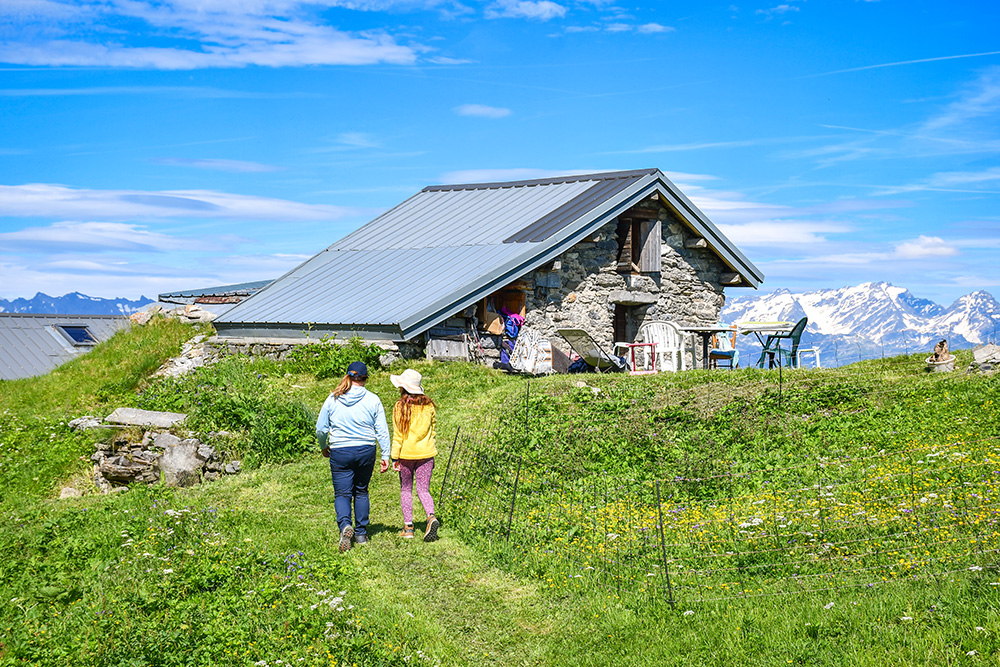
6. Seeking Professional Help for Fear of Heights
Sometimes, tackling vertigo alone feels overwhelming — and that’s okay.
You’re not alone in this.
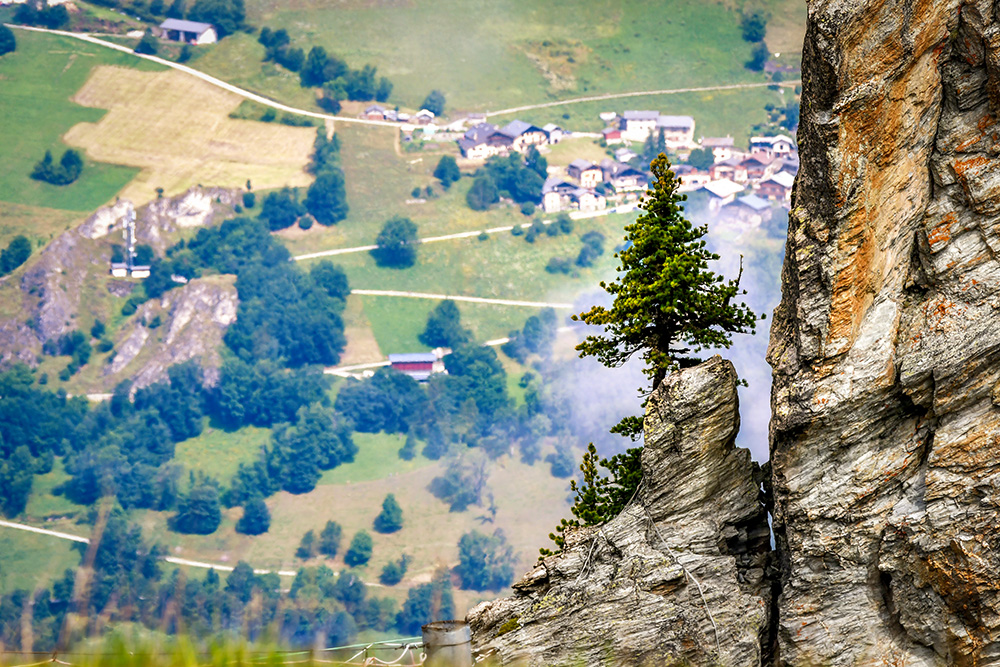
Therapy Can Help
Cognitive Behavioural Therapy (CBT) is a proven method for managing phobias.
A professional can guide you through gradual exposure to heights, helping you retrain your brain to react more calmly.
Consult a Specialist
If your vertigo is persistent or linked to physical symptoms like dizziness or nausea, it’s worth visiting a doctor.
Issues with your inner ear or vision can sometimes mimic or worsen vertigo.
Sorting these out can make a world of difference.
Seeking help isn’t a sign of weakness; it’s a step toward empowerment.
7. Bonus Tips for a Fear of Heights-Free Adventure
To wrap up, here are some extra tips to keep in your back pocket:
Try Indoor Rock Climbing
Climbing gyms are a fun, low-pressure way to test your limits.
The controlled environment makes it easier to practise staying calm at height.
Hydrate and Fuel Your Body
Low energy can make you feel shaky, which only adds to anxiety.
Keep snacks and water handy to stay strong on the trail.
Choose Your Hiking Crew Wisely
Go with people who understand your journey and won’t push you too hard.
Compassionate companions make all the difference.
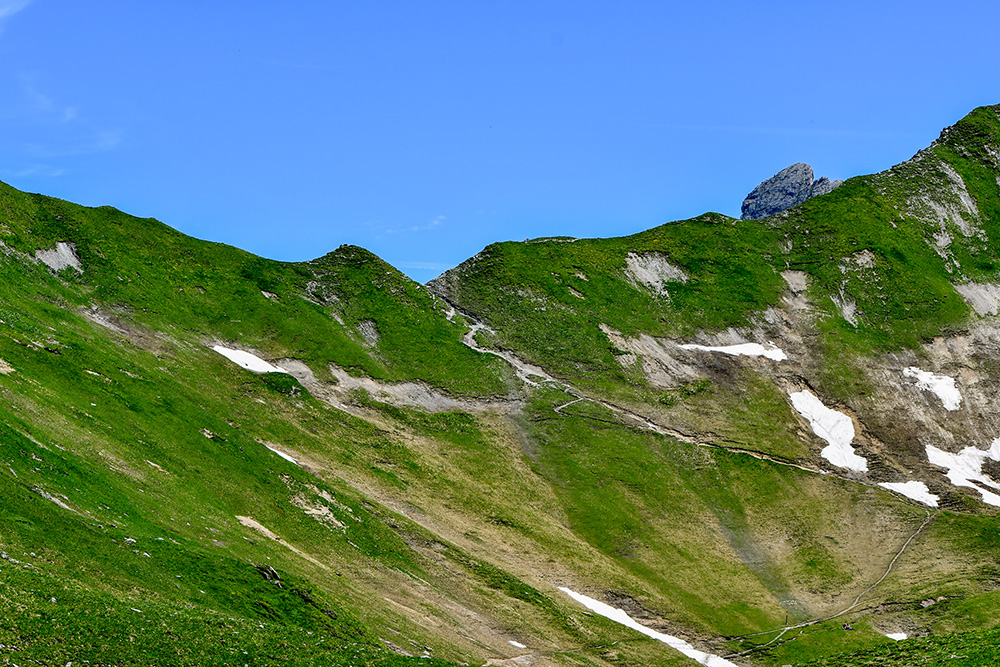
I remember this clearly during my vertigo episode at the Col du Coin.
We came across a couple who had just climbed up the steepest side of the mountain pass.
The woman was visibly exhausted, while I sat on a rock, struggling with vertigo (and trying to manage my nausea!).
Striking up a conversation with her felt surprisingly comforting — it helped distract me from my own discomfort.
Moments like these remind me how valuable supportive interactions can be on the trail.
A few minutes later, another woman arrived at the col, having taken the ridge path that I couldn’t bring myself to follow.
She was visiting from the Paris region and had gone farther than I did, managing to take in the full view of Mont Blanc.
But even for her, the narrow path had been a real challenge due to vertigo.
Despite having trekking poles, which had clearly made things easier for her, she also decided to turn back.
Her decision reminded me that even with preparation and the right gear, respecting your limits is key.
But what truly gave me confidence and courage was the fact that she understood exactly how I felt.
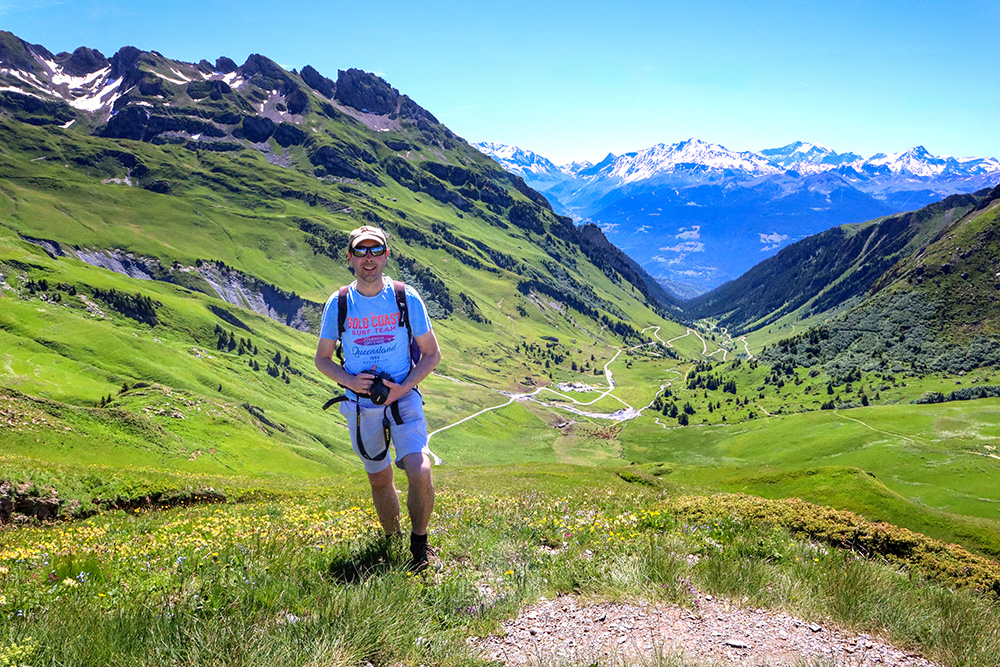
Conclusion about Fear of Heights and Vertigo
Overcoming vertigo in the mountains isn’t about becoming fearless; it’s about becoming confident.
It takes time, patience, and a willingness to step outside your comfort zone — just a little at a time.
Think of the freedom you’ll feel standing on a mountaintop, knowing you didn’t let fear hold you back.
The mountains are calling, and this time, you and I are ready to answer!


